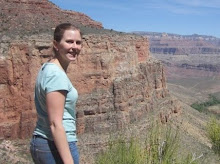 With warm summer days approaching, it’s enjoyable and safe to swim in the
With warm summer days approaching, it’s enjoyable and safe to swim in the By Jessica Porter
Now that it’s officially spring and the weather is warmer, many students are anticipating the first day they can throw on their bathing suits and head to Belle Isle, despite the
“I feel like I'm getting out of the city for a bit and connecting with nature,” said senior Angel Quan who often goes to Belle Isle during the summer.
It should come as a relief that the water is actually cleaner than many other rivers on the east coast. The part of the river from the
“Among the 16 major rivers along the eastern seaboard if you were to go from Virginia all the way up to Maine … the James would be one of the top two or three best in terms of the nutrient load it carries,” said Dr. Paul Bukaveckas, a large-river ecologist at Virginia Commonwealth University.
But just because the
Bacteria come from things like fecal matter from dogs and cows and faulty septic systems. Nutrients are things like manure and fertilizer from farmers and lawns or water runoff from waste water treatment plants. Every time it rains, all these pollutants from streets, farms, factories and homes enter the river.
“I have been to the river, but I don’t swim in it. With all the factories like Philip Morris around here it has to be dirty,” said senior Selma Bajramovic.
However, there are many organizations and people in this area who try to keep the levels of bacteria and nutrients in the river low.
David Sligh considers himself the “voice and advocate for the whole watershed” and helps protect the river. He is the upper James Riverkeeper and monitors the water itself and the areas around the river.
Some of the ways Sligh protects the river are by making sure construction sites have proper barriers along the river, checking oxygen levels, Ph levels, conductivity (how easily a current can pass through) and turbidity (how many particles there are that block sunlight).
Although there is no sure way to tell if water is polluted without the proper tools, Bukaveckas said there are signs that usually mean clean or polluted water.
“If there’s obvious life, that’s generally a good sign. If you see fish, insects, herons, fish and ospreys then that’s a good sign,” said Bukaveckas. “The simplest thing to look at is what you see happening on the land surrounding the river. If you’re canoeing and all you see is forest on either side of you, you know the banks of the river are well protected,” and the water is probably cleaner.
The general rule is to not swim within 24 hours of a rain event because all the pollutants from the streets enter the river through the water runoff. But besides that, swimming in this area of the James is safe and enjoyable, Bukaveckas said.
“I think enough people use it that I wouldn’t be scared going in there, but you don’t want to take a big gulp of water,” said Sligh about the water quality.

No comments:
Post a Comment